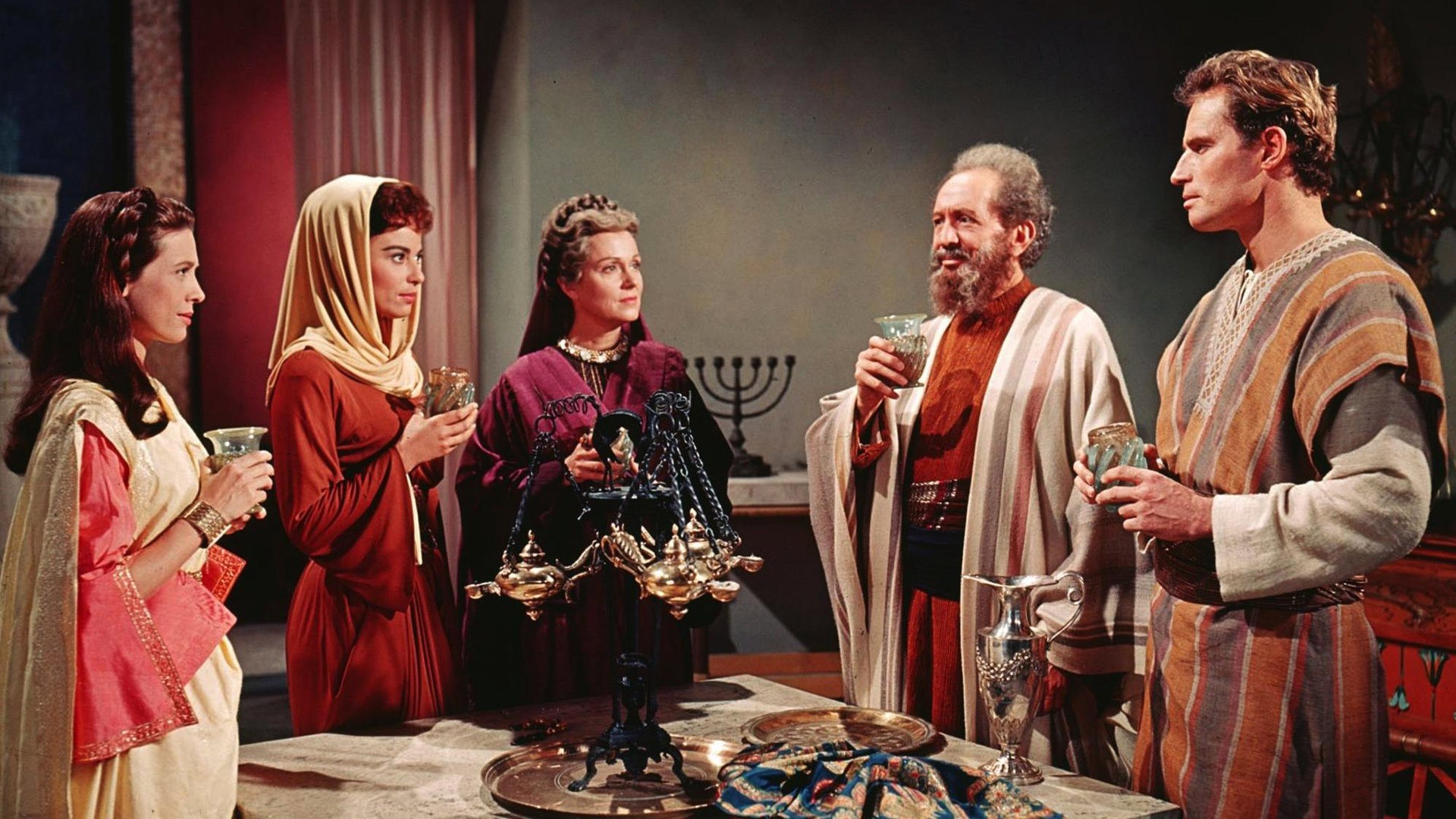“Ben-Hur” (1959)

“Ben-Hur,” directed by William Wyler and released in 1959, is a monumental film that stands as a pinnacle of classic Hollywood cinema. An adaptation of Lew Wallace’s 1880 novel, the film is renowned for its grand scale, powerful storytelling, and enduring themes of faith, redemption, and personal transformation. With its epic narrative, stunning cinematography, and groundbreaking set pieces, “Ben-Hur” remains a landmark in the history of film.
Set in the time of Jesus Christ, the film follows the dramatic life of Judah Ben-Hur, portrayed with intense fervor by Charlton Heston. Judah is a Jewish prince and merchant in Jerusalem, whose life takes a dramatic turn when he is falsely accused of treason by his childhood friend, Messala, played by Stephen Boyd. This betrayal sets off a chain of events that leads to Judah’s dramatic fall from grace, his subsequent rise as a charioteer, and his eventual quest for vengeance and redemption.

The narrative of “Ben-Hur” is both sweeping and intimate, reflecting the dual nature of the story. On one hand, it is an epic historical drama that encompasses grandiose scenes of battle, political intrigue, and personal vendettas. On the other hand, it is a deeply personal story of forgiveness, faith, and transformation. The film’s dual focus allows it to explore both the larger historical context of its setting and the individual struggles of its characters.
One of the most iconic aspects of “Ben-Hur” is its portrayal of the chariot race, which is widely considered one of the greatest action sequences in cinematic history. This thrilling and meticulously choreographed race takes place in a vast, purpose-built arena and showcases the film’s commitment to grandeur and realism. The scene’s technical achievement, which involved extensive use of practical effects and stunt work, remains a testament to the film’s innovative approach to filmmaking. The chariot race not only serves as a high point of action but also symbolizes Judah Ben-Hur’s struggle and determination, encapsulating his journey from betrayal to triumph.

The film’s epic scale is matched by its impressive production design. The sets, costumes, and cinematography immerse the audience in the grandeur of ancient Rome and Jerusalem. The film’s attention to historical detail and its use of massive sets and thousands of extras contribute to its sense of authenticity and spectacle. The portrayal of the Roman Empire, with its opulence and decadence contrasted with the humble, yet profound, backdrop of Judean life, enhances the film’s thematic depth and visual splendor.
“Ben-Hur” also stands out for its exploration of religious themes, particularly its depiction of Christ’s life and influence on Judah. The film subtly interweaves the story of Jesus into its narrative, highlighting the transformative power of faith. This is exemplified in key moments, such as when Judah, suffering from his trials and seeking vengeance, encounters Jesus and witnesses his crucifixion. These encounters serve as pivotal moments in Judah’s personal journey, leading him to a deeper understanding of forgiveness and redemption. The film’s portrayal of Christ is both reverent and understated, allowing his presence to impact Judah’s life without overshadowing the central narrative.
The performances in “Ben-Hur” are integral to its success. Charlton Heston delivers a powerful and emotionally charged performance as Judah Ben-Hur, capturing the character’s evolution from a wronged prince to a humbled man of faith. Stephen Boyd’s portrayal of Messala, the antagonist, adds a layer of complexity to the film’s depiction of friendship turned to enmity. The supporting cast, including Martha Scott as Judah’s mother, Jack Hawkins as the Roman sheik, and Hugh Griffith as the chariot-racing mentor, contribute to the film’s rich tapestry of characters and their development.

The film’s musical score, composed by Miklós Rózsa, is another standout element. The sweeping and dramatic score enhances the film’s epic quality, underscoring its emotional and action-packed scenes. Rózsa’s work earned him an Academy Award for Best Score, and the music continues to be celebrated for its ability to elevate the film’s grand narrative and evoke its themes of heroism and redemption.
“Ben-Hur” received widespread acclaim upon its release and went on to achieve significant commercial and critical success. It won a record 11 Academy Awards, a feat that demonstrated its impact and excellence across various aspects of filmmaking. The film’s achievements in categories such as Best Picture, Best Director, and Best Actor, among others, solidified its place as one of the greatest films of all time.
In conclusion, “Ben-Hur” (1959) is a cinematic masterpiece that exemplifies the epic tradition of Hollywood filmmaking. Through its grand storytelling, remarkable set pieces, and exploration of profound themes, the film has left a lasting legacy. It remains a powerful and enduring work that continues to captivate audiences with its tale of faith, redemption, and the enduring human spirit.










